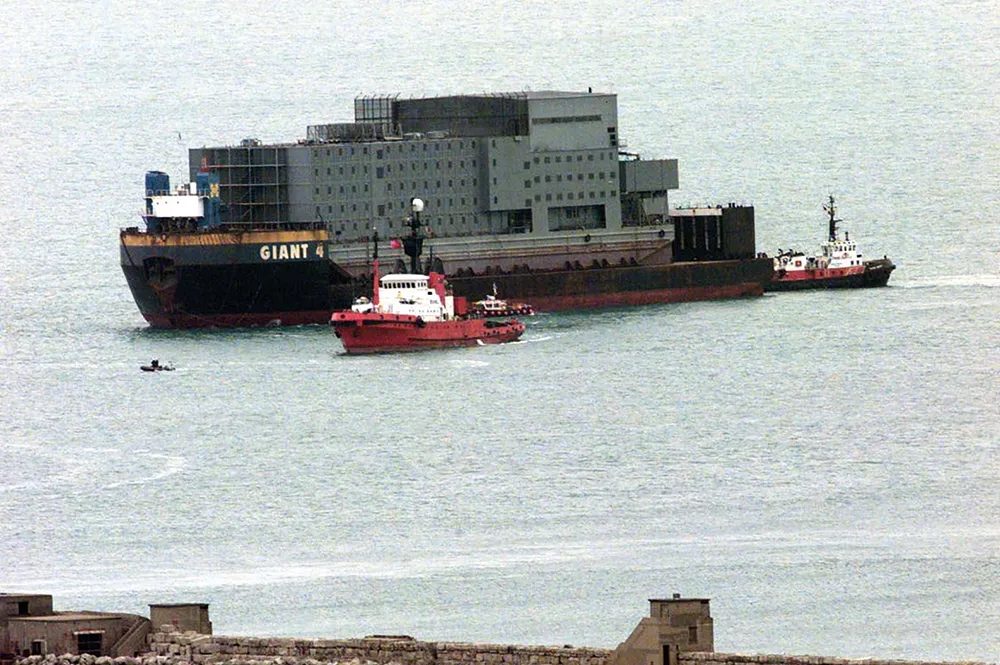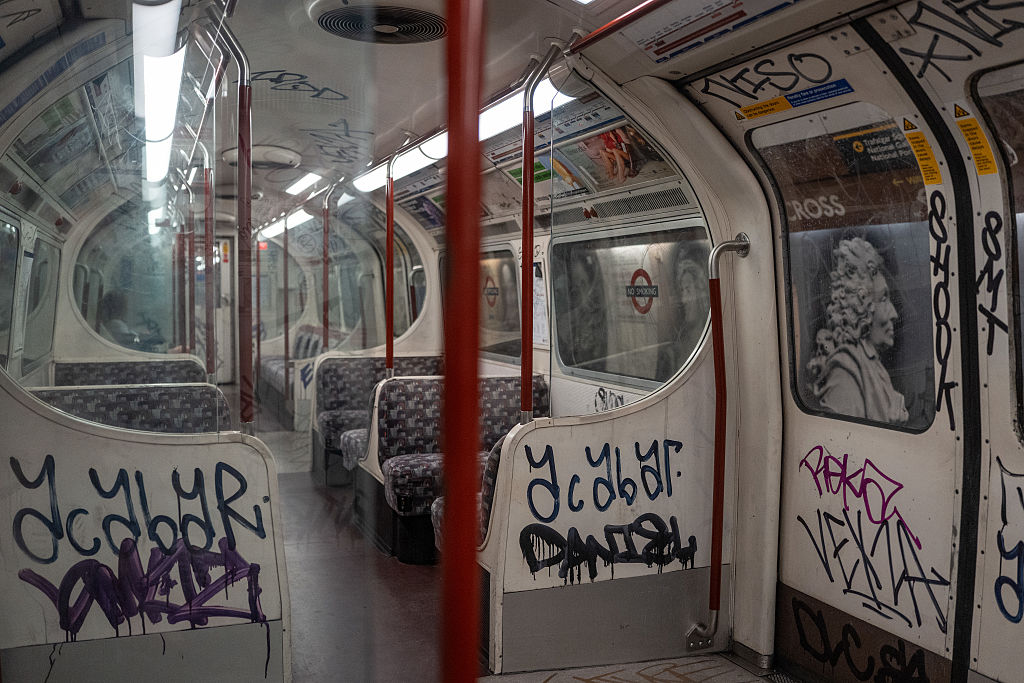Ships change not just their location but their identity throughout their lives. Medieval trading vessels became warships at royal command. The Queen Mary was a troop ship during World War Two. Ian Kumekawa, of Harvard University, has had the clever idea of following a modern ship through its metamorphoses and asking how these changes in use reflect the economic conditions of our time. But this ship is no Queen Mary. He calls it the Vessel, because it changes its name and owner so many times. Without its superstructure, no one would give it a second glance. It has neither an engine nor a rudder. It had to be mounted on a heavy-lift ship or towed to reach it destination.
It is, in fact, a simple steel barge, originally little more than a hull, built on the outskirts of Stockholm in 1979 and sold to Norwegian owners. But it has moved extraordinary distances: first to Scapa Flow in Scotland, then to Gothenburg in Sweden, before being taken to the Falkland Islands, a Volkswagen factory on the German coast, Manhattan, Portland Bill in England and Onne in Nigeria, where it is now laid up, rusting away. Meanwhile its superstructure has provided accommodation for British troops, Gastarbeiter, American and British prisoners and oil workers in the Gulf of Guinea.
The many vicissitudes of the Vessel, along with a sister ship that shared some of the same journeys, provide Kumekawa with a springboard from which he can jump to lengthy discussions of the global economy. It is a history of economic flux. When the ship was constructed, Sweden appeared to be enjoying boom times. But high wages began to undermine the country’s well-established heavy industry. In western Europe and North America a massive shift towards service industries took place. This was a story repeated again and again as the Vessel moved around the Atlantic. As well as the gradual decline in manufacturing, sudden crises had a shock effect on the global economy.
The most significant of these were generated by a hike in oil prices, notably during the Yom Kippur War of 1973, and again during the Iran-Iraq War seven years later. There was, nonetheless, a silver lining. Higher oil prices rendered viable costly investment in exploration for new sources of oil and gas, such as the North Sea, enabling Britain to become a net exporter for a while. These changes affected the viability of the companies (often just shell companies) that owned the Vessel and explain why it has changed hands so often.
The Vessel was a product of the age of containerization. The invention of standardized containers revolutionized global commerce and had a dramatic effect on the labor market. The opportunity arose to shift large quantities of low-cost goods across the world in containers that were cheap to manufacture and could be loaded to the sky. The largest container ships now carry up to 20,000 units. This was the making of modern China. But the units aboard the Vessel were put to other uses. The need for short-term accommodation for British troops in the Falklands led to the transfer of the ship to Port Stanley in 1983.
The ship’s final reincarnation was as an ill-adapted, steamy hostel for hundreds of oil workers in Nigeria
Container units could be adapted into not very snug quarters for other people difficult to accommodate when pressure on resources was high. The New York Department of Correction had run out of space for prisoners, so in 1989 it took out a lease on the Vessel, turning it into a jail known as Maritime Facility II. In 1997, the Vessel moved again to Dorset and became HMP Weare, home to a drug treatment program that was widely praised, as were the conditions on board. One inmate said that the food was “the best he ever had.” Its final reincarnation, in Nigeria, was as an ill-adapted, steamy hostel for hundreds of oil workers based in the Onne Oil and Gas Free Zone. This was a free port, able to operate outside the supervision of the Nigerian government, which was, in any case, beset by massive corruption, especially in the oil industry.
Kumekawa’s assessment of the economic and social setting of the Vessel’s history is quite opinionated. He sneers at Great Britain: “For both the Argentines and the British, the Falklands War was a calculated exercise in rousing nationalist sentiment.” Margaret Thatcher used the war, he opines, “to shift attention away from disastrous economic conditions and political crises at home.” This fits ill with his demonstration elsewhere that global economic changes were transforming the labor market, and that Thatcherite policies attempted to address that.
And there is his equally contradictory treatment of the admittedly tough policies of the NYPD in suppressing drug-related crime, leading to an increase in New York’s prison population. These policies made it a much safer city, but for Kumekawa this was simply to appease an alarmed white middle-class. He likes to throw in the unexplained term “international capitalism” (clearly a Bad Thing) and at the end of the book launches into a diatribe against neoliberalism, which he admits is hard to define.
Naive comments of this order spoil what is in other respects a brilliantly conceived and fascinating demonstration that the history of one rusty ship can illuminate our understanding of the global economy.


























Leave a Reply